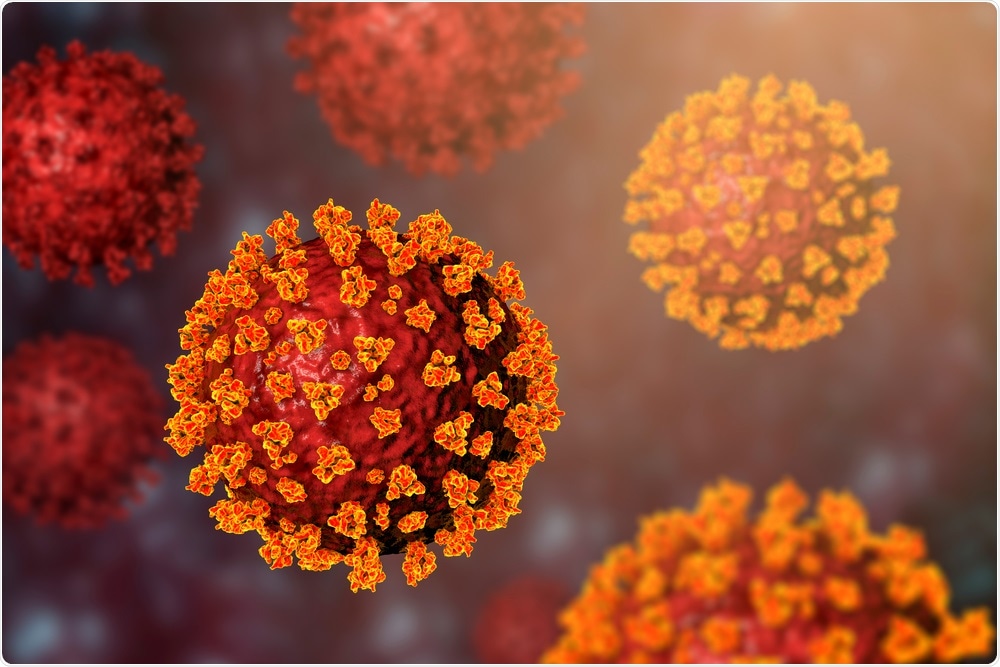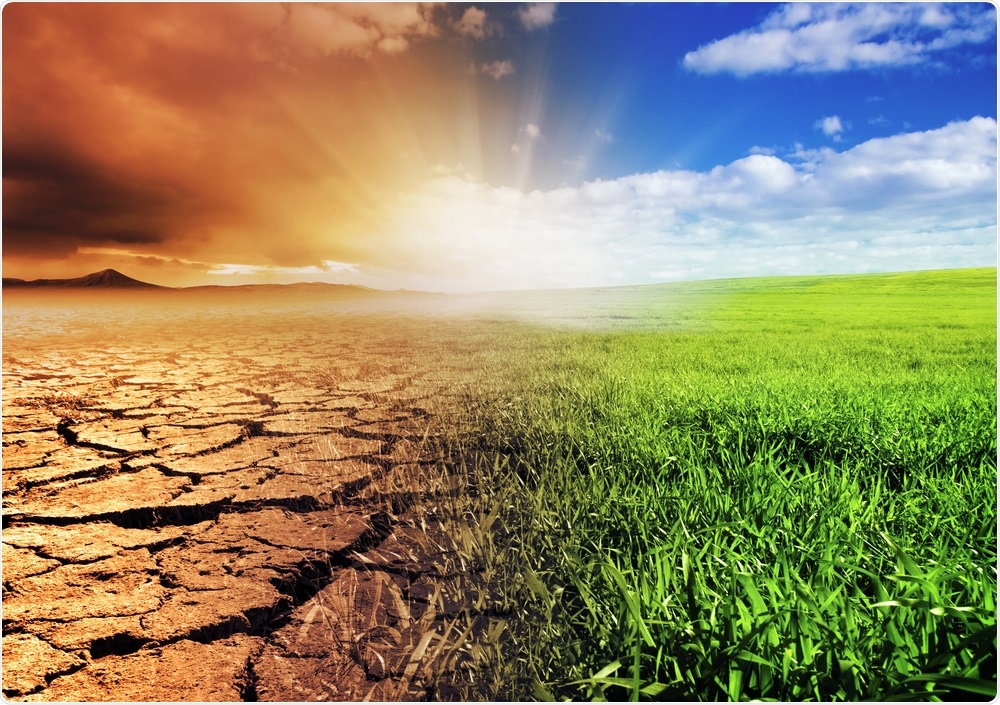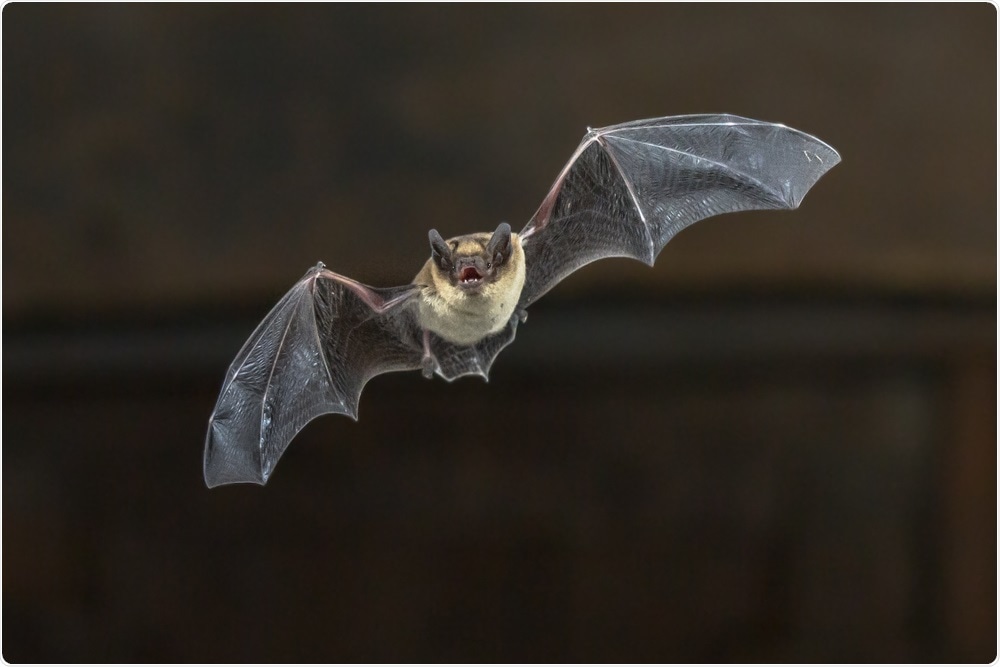We began the study after genetic data first indicated that severe acute respiratory syndrome coronavirus 2 (SARS-CoV-2), the virus that causes COVID-19 disease, had originated in bats. We had also been aware of research demonstrating the impact that climate change can have in facilitating disease transmissions.
These two elements motivated us to investigate how the distribution of the world's bats, which carry an estimated more than 3,000 different types of coronavirus, has changed in the past century due to climate change.

SARS-CoV-2. Image Credit: Kateryna Kon/Shutterstock.com
Can you please give an overview of climate change and how it is affecting species worldwide?
Most species require particular climatic and environmental conditions to be present in an area in order for it to be a suitable habitat.
As climate change alters these conditions, the geographic ranges of species begin to shift. This can force species to disappear from some areas while allowing them to expand in others.
What role does climate change play in the outbreaks of viral diseases?
Shifts in species’ geographic ranges due to climate change can move pathogens closer to humans directly, or push species carrying viruses into the habitats of other species that viruses can then jump to. Some of these jumps might not easily happen without climate change, and they can have major consequences for where the virus goes next.
There are also other ways in which climate change can affect the spread of viruses. Higher temperatures can increase the viral load (the number of virus particles in an animal) in some species, which can make it more likely that a virus is transmitted. Higher air temperatures can also increase the tolerance of viruses to heat, which in turn can increase infection rates, given that one of the primary defense systems against infectious diseases is to raise our body temperature.

Climate Change. Image Credit: kwest/Shutterstock.com
How have greenhouse gas emissions over the last century made southern China a hotspot for bat-borne coronaviruses?
Our estimates suggest that at the beginning of the 20th century, a significant portion of the natural vegetation in this area consisted of tropical shrubland. This type of vegetation was likely not suitable for many of the forest-dependent bat species occurring in the region.
Climatic changes over the past century – characterized by higher atmospheric CO2 levels, increased temperature, altered precipitation patterns, and decreased cloud cover – led to a shift in this type of vegetation towards forest biomes. These provided suitable habitats that many regional bat species were able to expand into.
Can you describe how you carried out your latest research into the causes behind the SARS-CoV-2 outbreak?
We created a map of the world’s vegetation as it was a century ago, using records of temperature, precipitation, cloud cover, and CO2. We then used information on the vegetation requirements of the world’s bat species to determine the global distribution of each species in the early 1900s.
Comparing this to current distributions allowed us to estimate how the number of bat species has changed across the globe over the last century due to climate change.
What did you discover?
Our analysis revealed that the shift in the natural vegetation due to climate change in the last century allowed many bat species to expand their geographic ranges in the southern Chinese Yunnan province and neighboring areas in Myanmar and Laos – the place where SARS-CoV-2 may have originated.
We estimate that this resulted in an increase of around 40 bat species in this region. Given that each bat species carries on average 2.7 coronaviruses, this corresponds to an estimated increase in the order of 100 bat-borne coronaviruses. This increase in the number of bat species likely created new opportunities for cross-species transmissions of viruses, which may have increased the likelihood of an eventual spillover to humans.

Bats. Image Credit: Rudmer Zwerver/Shutterstock.com
How could your research help to reconstruct and provide further evidence on the origin of the COVID-19 outbreak?
Researchers are currently aiming to reconstruct how SARS-CoV-2 made its way to humans. If climate change shifted the distribution of bats that carried the genetic ancestor of the virus, then this may have facilitated its transmission to other species, such as pangolin (which have been suggested as possible intermediate hosts), and facilitated the eventual spillover to humans.
Epidemiological models could help to provide quantitative insights into whether range shifts in bats increased the likelihood of viral transmissions.
Do you believe that this research will further help people to understand the severity of climate change?
Our analysis is a first step towards assessing the possible contribution of climate change in the pandemic, not the final one. With this said, we certainly know that climate change is altering the global distribution of pathogen-carrying wildlife significantly and that these shifts in species’ ranges can play a critical role in the transmission and evolution of harmful viruses.
It is therefore important to consider the impact of climate change also in the context of emerging infectious diseases and global public health.
Where can readers find more information?
About Dr. Robert Beyer
Robert studied mathematics and philosophy at the Technische Universität München and at Kyoto University, and received an award-winning double Ph.D. in mathematics from the Université Paris-Saclay and in forest science from the Technische Universität München.
After working as a research associate at the University of Cambridge between 2015 and 2021, he joined the Potsdam Institute for Climate Impact Research as a Marie Curie research fellow, where he develops predictions of how climate change will impact global migration flows in the coming decades.